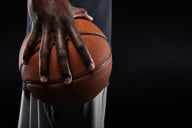You have /5 articles left.
Sign up for a free account or log in.
Universities in the Midwest were among the latest to announce large numbers of positive cases of COVID-19 and attempts to quarantine infected students.
Ohio State University reported 882 positive cases of COVID-19 among students and 20 positives among employees. Classes began at Ohio State on Aug. 25.
The university has a 3.13 percent positivity rate among students and a 4.3 percent positivity rate average over the last week, according to its dashboard site. But it reported a 9.66 positivity rate for students who live off campus and were tested in the last 24 hours, with a 5.7 percent rate for students who live on campus. The university currently has 462 students in isolation and quarantine.
Ohio State recently suspended 228 students for violating coronavirus-related safety guidelines. And it has threatened to crack down on students who host gatherings of more than 10 people who are not wearing masks or social distancing.
The University of Dayton announced on its COVID-19 dashboard that the cumulative number of positive cases among students on campus has reached 1,042, including 639 active cases. The rest -- 403 students -- have recovered.
The private university enrolls roughly 11,500 students, including about 9,000 undergraduates, meaning its total positive cases make up almost 10 percent of all students. The university's first day of classes was Aug. 24. Dayton has created five campus status levels for COVID-19, with level five being to largely vacate the campus and have most students leave on-campus housing. The university reached level four last week, which includes pivoting to remote learning while students stay in on-campus housing. It shifted to remote learning last month when cases spiked.
UD in a statement cited a flattening of seven-day averages for new positive cases as an encouraging sign. It said the university has been aggressive with the testing, isolation and quarantining of students.
"University leaders continue to work closely with local public health officials and UD’s panel of local medical experts to monitor, assess and contain the situation on campus," the university said. "We will determine next week what steps to take based on the situation and trends we see at that time. While we hope the trends will indicate that we can return to at least some in-person learning, we also may need to consider further restrictions, including the possibility of moving to fully remote learning, if Public Health believes our campus is contributing to broader community spread."
Thirty of the 40 Greek houses at Indiana University are under quarantine for COVID-19, The Indianapolis Star reported.
There is an 8.1 percent positive rate among students living in fraternity and sorority housing. Residence halls have a 1.6 percent positive rate.
All communal houses at Indiana have been ordered to suspend activities, except housing and dining.
Meanwhile, Temple University in Philadelphia and the State University of New York at Oneonta were the latest institutions to extend a temporary suspension of in-person classes to the rest of the fall term.
Only essential courses -- those that require some in-person instruction to meet educational objectives -- are not covered by the decision. Temple estimates 95 percent of its courses will be delivered online for the rest of the semester.
Temple students in university housing who choose to leave by Sept. 13 will receive full refunds of housing and meal plan charges. But students can remain on campus if they want or need to do so.
“We know this is disappointing for the many students and their families who had hoped for an on-campus experience,” said Temple’s president, Richard M. Englert, and its provost, JoAnne A. Epps, in a public letter announcing the decision. “Please know that if the data supported a decision to safely continue the fall semester experience on campus, we would have made every effort to do so. Unfortunately, the risks associated with the COVID-19 pandemic are simply too great for our students, faculty, staff and neighboring community.”
Two days ago, Philadelphia’s health commissioner declared a COVID-19 outbreak at Temple. The university’s COVID-19 dashboard listed 212 active cases as of 1 p.m. Wednesday, all among students. All but one were recorded among on-campus students.
Temple began fall classes Aug. 24.
SUNY Oneonta had paused its in-person instruction on Aug. 30, hoping that increased testing would limit the virus's spread. But its president, Barbara Jean Morris, said Thursday that the college would, at the urging of new SUNY chancellor Jim Malatras, implement a "plan to send on-campus students home and cease all in-person classes and activities for the rest of the fall semester."
-- Paul Fain, Rick Seltzer and Scott Jaschik
Questions about infection rates and the health impacts of the illness among college athletes were in the news Thursday.
Twenty-one institutions in the Atlantic Coast Conference, Southeastern Conference and Big 12 Conference declined to disclose positive COVID-19 cases among athletes to ESPN, citing federal student privacy laws, the media outlet reported. These three “Power Five” conferences are all preparing to play football games this month.
Of the 65 total Power Five institutions surveyed by ESPN, nearly one-third did not provide information about their coronavirus protocols for athletes in addition to withholding the number of positive tests among athletes, the outlet reported.
A potentially dangerous inflammation of the heart muscle was detected in about a third of Big Ten Conference athletes who’d tested positive for COVID-19, according to the Centre Daily Times.
Pennsylvania State University's director of athletic medicine, Wayne Sebastianelli, shared the estimate at a State College area school Board of Directors meeting Monday, the newspaper reported. MRI scans showed the athletes in question had myocarditis, an inflammation that can be deadly if not addressed. (Note: Penn State has amended Sebastianelli's comments about myocarditis, and Inside Higher Ed has updated its coverage of this matter here.)
“When we looked at our COVID-positive athletes, whether they were symptomatic or not, 30 to roughly 35 percent of their heart muscles [are] inflamed,” Sebastianelli said. “And we really just don’t know what to do with it right now. It’s still very early in the infection. Some of that has led to the Pac-12 and the Big Ten’s decision to sort of put a hiatus on what’s happening.”
The Big Ten and Pac-12 postponed fall sports in August. Both cited uncertainty about college athletes’ health amid coronavirus infections.
But other major football conferences continue to forge ahead with plans to hold modified seasons. That’s led to some pushback, with University of Nebraska football players filing a lawsuit against the Big Ten. The lawsuit prompted the revelation that the league’s members voted 11 to 3 in favor of postponing the football season. Recently, reports have surfaced that the Big Ten was discussing a season to begin the week of Thanksgiving.
-- Rick Seltzer and Greta Anderson
The United Campus Workers of Louisiana called for regents to stop face-to-face activities because of the coronavirus.
A statement from the union, which was chartered a year ago and has about 120 members who are graduate workers, faculty members and staff members, focused heavily on the situation at Louisiana State University. LSU has counted a total of 366 positive cases of COVID-19 since Aug. 15, with most coming since Aug. 25.
More information has been learned about the transmission of the coronavirus since the university created its reopening plans, the union said in its statement. It raised concerns about the risk of transmission in enclosed spaces and from people who are not showing symptoms of the infection.
“In light of these facts, reopening a university system that operates in all 64 parishes in Louisiana endangers everyone in the state, particularly the state’s underserved and high-risk populations,” said the union’s statement. “For the safety of the LSU community and the state at large, United Campus Workers of Louisiana calls on the Louisiana Board of Regents to act in accordance with its ‘constitutional mandate to serve the educational, health care and economic development goals of Louisiana’ and immediately halt face to face activities on campus.”
The statement comes shortly after LSU’s interim president, Tom Galligan, said four student organizations have been charged with violating the university’s code of conduct regarding the coronavirus. Video has surfaced that appears to show off-campus parties with few precautions in place.
“We have seen the videos, and they are very concerning,” Galligan said, according to KSLA. “We’re going to investigate, communicate and, as necessary, we’ll enforce.”
Galligan also signaled a high level of concern about the virus’s spread.
“I’m concerned and I’m monitoring and we’re looking at it very carefully, because if it keeps going up, we’re going to go remote,” he said, according to KSLA.
The union does not have a collective bargaining agreement with LSU.
-- Rick Seltzer








